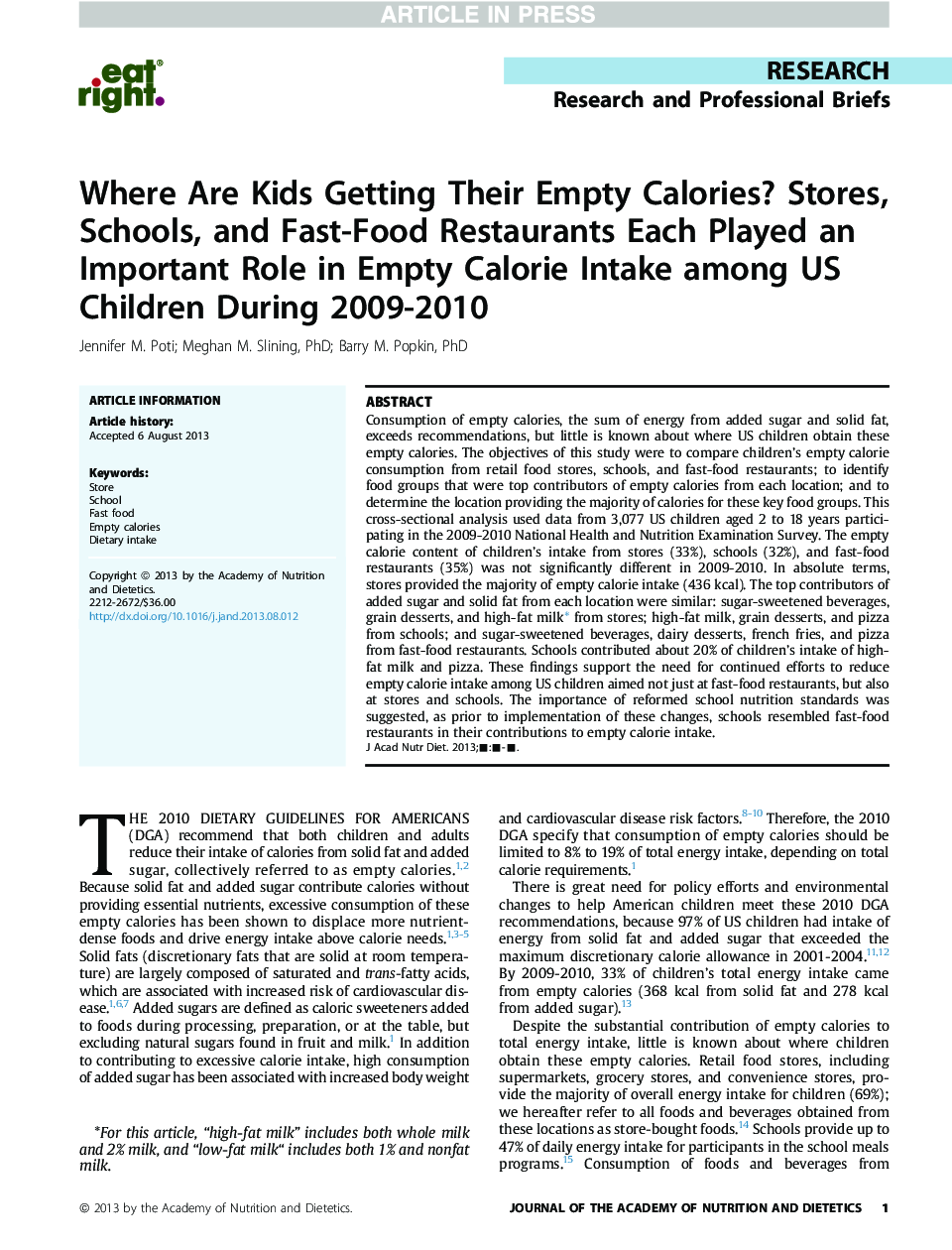| Article ID | Journal | Published Year | Pages | File Type |
|---|---|---|---|---|
| 5870054 | Journal of the Academy of Nutrition and Dietetics | 2014 | 10 Pages |
Abstract
Consumption of empty calories, the sum of energy from added sugar and solid fat, exceeds recommendations, but little is known about where US children obtain these empty calories. The objectives of this study were to compare children's empty calorie consumption from retail food stores, schools, and fast-food restaurants; to identify food groups that were top contributors of empty calories from each location; and to determine the location providing the majority of calories for these key food groups. This cross-sectional analysis used data from 3,077 US children aged 2 to 18 years participating in the 2009-2010 National Health and Nutrition Examination Survey. The empty calorie content of children's intake from stores (33%), schools (32%), and fast-food restaurants (35%) was not significantly different in 2009-2010. In absolute terms, stores provided the majority of empty calorie intake (436 kcal). The top contributors of added sugar and solid fat from each location were similar: sugar-sweetened beverages, grain desserts, and high-fat milkâ from stores; high-fat milk, grain desserts, and pizza from schools; and sugar-sweetened beverages, dairy desserts, french fries, and pizza from fast-food restaurants. Schools contributed about 20% of children's intake of high-fat milk and pizza. These findings support the need for continued efforts to reduce empty calorie intake among US children aimed not just at fast-food restaurants, but also at stores and schools. The importance of reformed school nutrition standards was suggested, as prior to implementation of these changes, schools resembled fast-food restaurants in their contributions to empty calorie intake.
Keywords
Related Topics
Life Sciences
Agricultural and Biological Sciences
Food Science
Authors
Jennifer M. Poti, Meghan M. PhD, Barry M. PhD,
